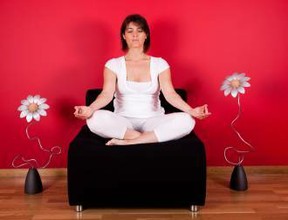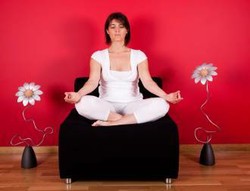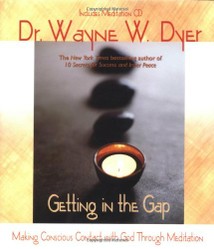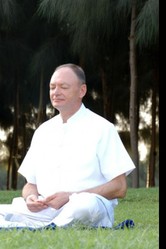The Hinduism meditation techniques are usually concentrative based. In general, concentrative meditation is about he mind focusing on a specific object or 'thing', such as the breath, a sound, the flame of a candle, a crystal, an image, an idea. By using the mind this way, we help it become more aware overall and gain a clarity that it didn't have before.
Maybe the best known technique of concentrative meditation is whereby you simply sit still while the mind focuses on the breath. This is the technique that beginners to meditation are usually first taught because it is the easiest to do without getting discouraged.
The breath comes from within and it is easier to focus on it than on various sounds that could become annoying, or on a candle which can become distracting.
In addition focusing on the breath helps not only with the meditating act but also with simply calming the person, so the beginner meditator can see some benefits of meditation right away. It is much easier to have the excitement and motivation to do something when there are visible benefits that can be felt immediately.






 Focusing on a candle is very much the same, although it is a little more difficult. Here, the mind is asked to keep its attention only on the flame and the candle burning. Each time it wanders, we must bring it back, telling it to become used to stillness.
Focusing on a candle is very much the same, although it is a little more difficult. Here, the mind is asked to keep its attention only on the flame and the candle burning. Each time it wanders, we must bring it back, telling it to become used to stillness. Any meditation practice improves us as individuals by teaching coping and relaxation skills and increasing thoughts of happiness, contentment, peace and satisfaction.
Any meditation practice improves us as individuals by teaching coping and relaxation skills and increasing thoughts of happiness, contentment, peace and satisfaction.

 Percy Jackson Books In Orderon 10/15/2014
Percy Jackson Books In Orderon 10/15/2014
 Meditation For Pregnancyon 09/25/2013
Meditation For Pregnancyon 09/25/2013
 New Age Meditationon 09/23/2013
New Age Meditationon 09/23/2013
 How To Use Essential Oils With Reikion 09/22/2013
How To Use Essential Oils With Reikion 09/22/2013



Welcome To The Concentrative Meditation Guestbook
No, you don't have to count your breath. That's how I learned meditation, but eventually I found it distractive. I started from 1- 2 and so on and when I 'clicked out', I had no idea what number was the last. So now I simply focus on the breath, 'watching it' so to speak when I inhale and exhale, but no longer count.
Sometimes I put on some classical piano music and fall asleep focusing on that. I'm not always in the mood for classical piano, however. There are times when I just listen to my breath, as you say, but I don't count inhales and exhales -- should I?